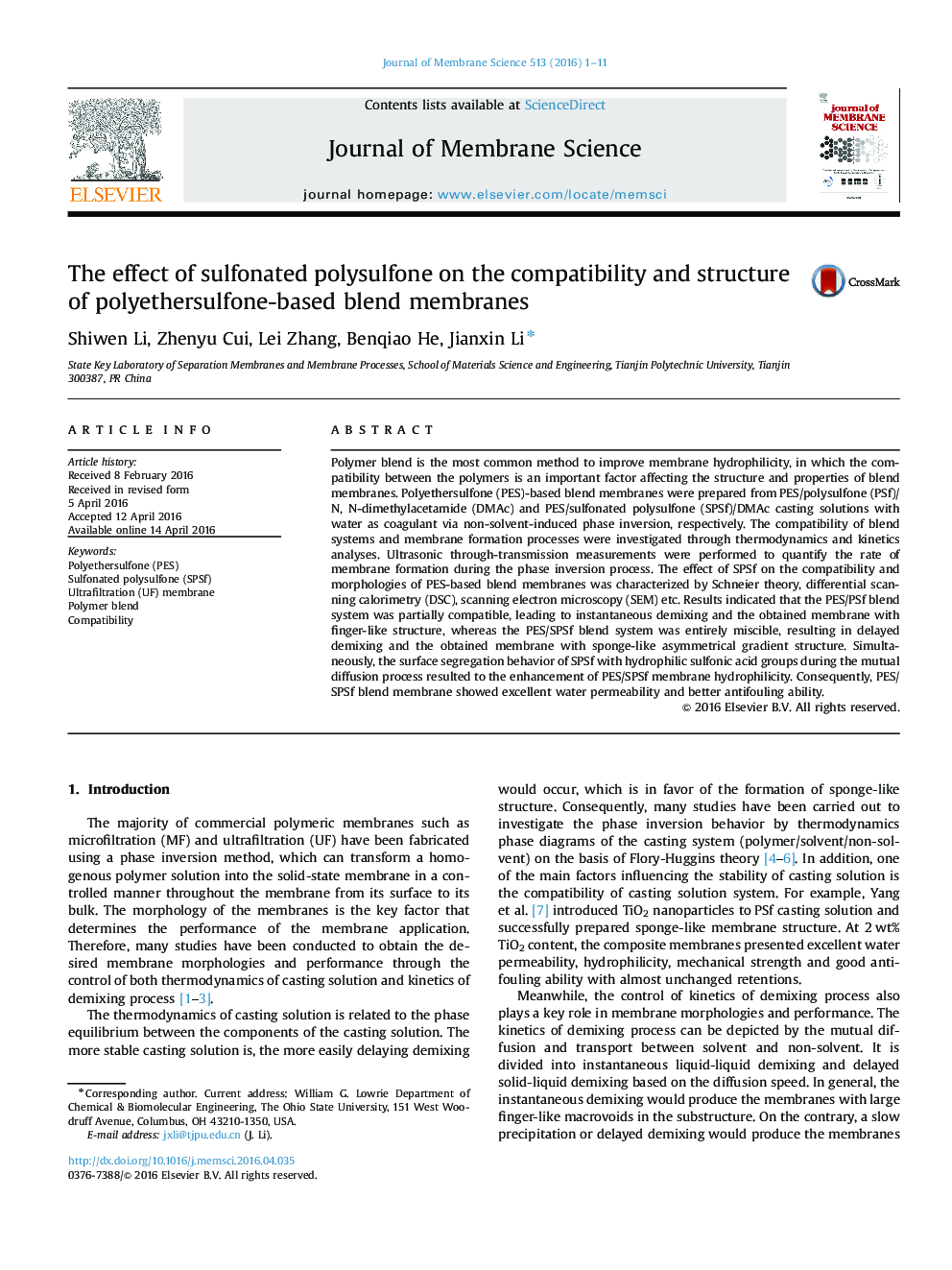| Article ID | Journal | Published Year | Pages | File Type |
|---|---|---|---|---|
| 632323 | Journal of Membrane Science | 2016 | 11 Pages |
•Compatibility between polymers affects the structures and properties of membranes.•Membrane formation mechanism was investigated through thermodynamics and kinetics.•PES/SPSf blend system was entirely miscible.•PES/SPSf UF membrane obtained exhibits sponge-like asymmetrical gradient structure.•PES/SPSf membrane obtained shows high permeability and better antifouling ability.
Polymer blend is the most common method to improve membrane hydrophilicity, in which the compatibility between the polymers is an important factor affecting the structure and properties of blend membranes. Polyethersulfone (PES)-based blend membranes were prepared from PES/polysulfone (PSf)/N, N-dimethylacetamide (DMAc) and PES/sulfonated polysulfone (SPSf)/DMAc casting solutions with water as coagulant via non-solvent-induced phase inversion, respectively. The compatibility of blend systems and membrane formation processes were investigated through thermodynamics and kinetics analyses. Ultrasonic through-transmission measurements were performed to quantify the rate of membrane formation during the phase inversion process. The effect of SPSf on the compatibility and morphologies of PES-based blend membranes was characterized by Schneier theory, differential scanning calorimetry (DSC), scanning electron microscopy (SEM) etc. Results indicated that the PES/PSf blend system was partially compatible, leading to instantaneous demixing and the obtained membrane with finger-like structure, whereas the PES/SPSf blend system was entirely miscible, resulting in delayed demixing and the obtained membrane with sponge-like asymmetrical gradient structure. Simultaneously, the surface segregation behavior of SPSf with hydrophilic sulfonic acid groups during the mutual diffusion process resulted to the enhancement of PES/SPSf membrane hydrophilicity. Consequently, PES/SPSf blend membrane showed excellent water permeability and better antifouling ability.
Graphical abstractFigure optionsDownload full-size imageDownload high-quality image (273 K)Download as PowerPoint slide
